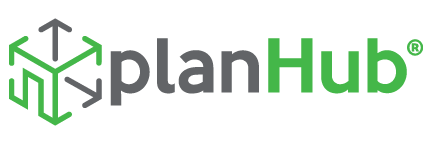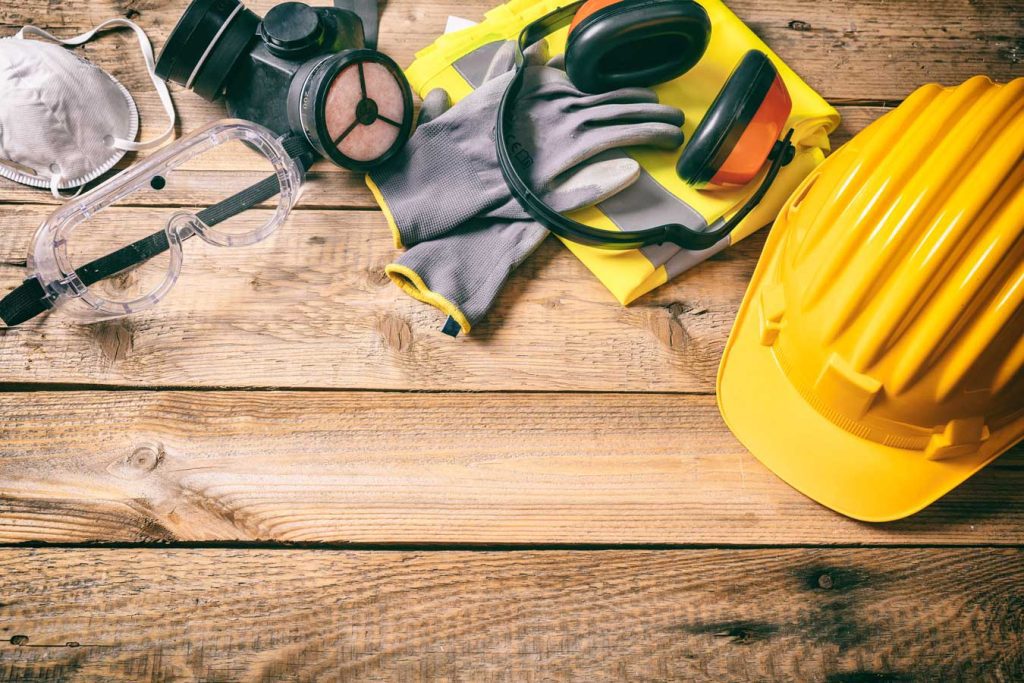Each year OSHA releases the top safety violations from the year before. Some of these are perennial favorites, unfortunately. To ensure that your company doesn’t fall prey to these issues, here’s a look at each of these top violations and what employers need to do to ensure that they comply.
- Providing Fall Protection
The number one cited violation is providing fall protection for employees. This one has been at the top of the list for years and looks to continue its run for the foreseeable future. In the construction industry the fall protection standard (1926.501) states that employers are responsible for providing a safe work site free of known dangers, including providing fall protection when workers are working six feet or more from the level below. This includes when workers are on overhead platforms, elevated workstations, working near holes in the floor or walls, and when over dangerous equipment and machinery at any height.
Employers should have a fall protection plan that includes the following specifications:
- All floor holes must be guarded using a railing and toe-board or a floor hole cover.
- Guardrails and toe-boards must be provided around every elevated open-sided platform, floor, or runway.
- If a worker could fall into or onto dangerous machines or equipment, from any height, guardrails and toe-boards must be provided.
- Other fall protection means may be needed, depending on the site conditions and work location. These means include safety harnesses and lines, safety nets, stair railings, and handrails.
- Keep floors as clean and dry as possible.
- Provide the required personal protective equipment (PPE) at no cost to workers.
- Provide fall protection training to workers in a language that they can understand.
- Hazard Communication
OSHA’s Hazard Communication Standard (1910.1200) requires employers to develop and disseminate information regarding the hazards of any chemicals used while a worker is on the job. This information must
be presented to workers through training and in a language that they can understand.
Employers should have a hazard communication plan that includes the following:
- Provide manufacturer-provided labels and safety data sheets for exposed workers.
- Provide training to workers on reading labels and data sheets, and on proper handling and use of chemicals on the job.
- Information on potentially hazardous substances must be readily available at each job site in case of exposure or spill.
- Respiratory Protection
The violations of this standard are related to respiratory protection against the spread of the COVID-19 virus and OSHA’s regulation on general respiratory protection (1910.134). As far as COVID exposure goes,
the standard states that PPE, including respirators, will be provided for workers when close contact with someone who is known or suspected to have COVID-19 cannot be avoided. This has limited application in the construction industry.
The standard requires the use of respirators that meet prescribed requirements. It’s important to note that cloth face coverings and surgical face masks do NOT meet those requirements.
If workers are subject to exposure to respiratory hazards (including the virus), the employer must develop and implement a Respiratory Protection Program (RPP) with the following elements:
- An assigned RPP administrator that is suitably trained in infection prevention and control.
- Site specific procedures and elements for the required use of respirators, including medical evaluation, fit testing, training, maintenance, etc.
- Site and worker risk assessments to identify which workers are at risk of exposure to any airborne hazards.
- Ladders
OSHA’s ladder standard (1926.1053) states that only properly rated ladders will be used and that they must be in good condition with no repairs or broken elements. Both self-supporting and non-self-supporting portable ladders must be rated for four times the maximum intended load and must be properly tested and labeled. Fixed ladders must be designed to hold at least two loads of 250 pounds plus anticipated loads from ice buildup, winds, rigging, and impact loads resulting from the use of ladder safety devices. Each rung or step must be able to support at least 250 pounds applied to the middle of the rung or step.
In addition, ladders are to be constructed correctly, including:
- Rungs, cleats, and steps shall be parallel, level, and uniformly spaced.
- Portable ladder rungs and steps shall be corrugated, dimpled, or coated with skid-resistant material to minimize slipping.
- Ladders shall not be tied or fastened together unless specifically designed for such use.
- Metal spreaders or a locking device shall be provided on stepladders to hold the front and back in an open position during use.
- Scaffolding
Scaffolding must be adequately designed and engineered to hold certain weight ratios (1926.451) and fall protection must be provided for workers on a scaffold that is more than ten feet from a lower level. The parameters of scaffolding design include:
- Generally, all scaffolding components shall be capable of supporting their own weight plus at least four times the maximum intended load.
- Connections to roofs and floors and counterweights for suspension scaffolds must resist at least four times the tipping momentum of the scaffold at the rated load of the hoist or at least 1.5 times the tipping momentum of the scaffold at the stall load of the hoist, whichever is greater.
- Suspension ropes and their connecting hardware on non-adjustable suspension scaffolds must be able to support at least six times the intended load for that rope. Likewise, suspension ropes and hardware used on adjustable suspension scaffolds must be able to support at least six times the maximum intended load for that rope while operating at either the rated load of the hoist or two times the stall load of the hoist, whichever is greater.
- The stall load of any scaffold hoist shall not be more than three times its rated load.
- Lockout/Tagout
The lockout/tagout standard (1910.147) states that employers have a responsibility to protect workers from hazardous energy stored in equipment, tools, or machinery and must train workers on how to properly protect themselves. The standard outlines the proper actions for doing this, but employers must make sure workers know, understand, and can follow these procedures.
Workers that are working in an area where these procedures are being used or who are authorized to lockout machines or equipment need to be trained on the proper use of the procedures, the prohibition against restarting or energizing machines or equipment that are tagged out, and the recognition and methods of isolating or controlling stored energy in the workplace. In addition, all employees need to be retrained
to maintain proficiency and when new or changed procedures are introduced.
- Powered Industrial Trucks (forklifts and lift trucks)
Forklifts and lift trucks must be designed to meet the American National Standard for Powered Industrial Trucks, Part II, ANSI B56.1-1969, and have a label signifying approval by the testing laboratory. Modifications and additions that could affect capacity and safe operation aren’t allowed without the manufacturer’s written approval. In addition, according to standard 1910.178, lift drivers must complete a safe operation course and evaluation to prove their ability to operate the equipment safely.
- Fall Protection Training
OSHA requires employers to provide fall protection training to workers on a regular basis (1926.503). The training should be conducted by a “competent person” and include the following:
- Recognizing/identifying potential fall hazards in the work area
- Correct procedures for use, maintenance, storage, and inspection of fall protection systems, including guardrails, personal fall arrest systems, safety nets, warning line systems, safety monitoring systems, controlled access zones, and any other protection which may be used
- When the safety monitoring system is used, the role and responsibilities of each employee
- As required, limitations on use of mechanical equipment while working on low-slope roofs
- As required, correct procedures for handling and storage of overhead protection equipment and materials
Each employee must receive a written certification record containing the employee’s name, training date(s), and the signature of either the trainer or employee. In addition, employers must provide retraining when it is believed that an employee doesn’t have the skill or understanding required by the standard.
- Eye and Face Protection
Employers must provide eye and face protection to workers exposed to the following hazards (1926.102):
- Flying or falling objects, including chips, fragments, sand, sparks, dirt. The employer must provide safety glasses with side shields or goggles.
- Heat hazards such as when working around furnaces, or when hot dipping or welding. Goggles or safety glasses with special-purpose lenses and side shields must be provided. Often a face shield may
be required in addition to safety glasses or goggles. - Chemical hazards when working with hazardous substances, as well as when working with blood. Properly fitted goggles, supplemented by a face shield when desired, should be worn.
- Dust created during woodworking, buffing, or caused by a dusty atmosphere. Eyecup or cover-type safety goggles are the only effective protection because they form a protective seal around the eyes.
Workers that use prescription lenses must wear eye protection that incorporates the prescription in its design or can be worn over prescription lenses without affecting the position of either the prescription lenses or the protective lenses.
- Machine Guarding
Unguarded machines and tools can cause crushing and amputation of extremities, burns, or blindness. Tools and equipment such as cutters, shears, presses, milling machines, saws, jointers, and other power tools require point of operation guarding that is designed to prevent the operator from having a body part in the work area during operation (1910.212). Hand tools should be used when possible to permit easy handling
of material without placing a hand in the danger zone. These tools are not in lieu of guards but can be used to supplement that protection.
Workers should never modify a machine, tool, or piece of equipment to disable provided guarding or other safety measures. If a tool is determined to be unsafe due to the lack of guards or other protection, the tool should be removed from use until repaired. Employees should also be trained in the proper use of equipment or tools, including the appropriate clothing to wear to avoid becoming entangled.
PlanHub has more content to help you keep your team safe on the job.
The Importance of Trench Safety
The 10 Most Common Construction Site Hazards – and How to Avoid Them


